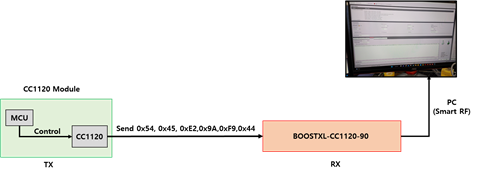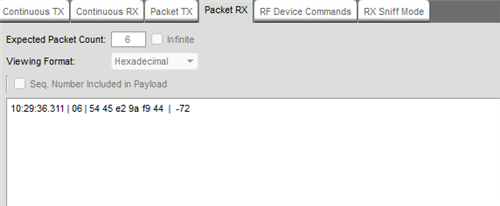hello. experts
I an a person who is experimenting with the CC1120 in the environment shown in the picture below.

The CC1120 module acts as a TX and is composed of an mcu and a CC1120 chip, the CC1120 chip is controlled by the MCU.
The CC1120 module is manufactured, not a commercial product.
BOOSTXL-CC1120-90 is used as RX and is a commercial product of TI.
BOOSTXL-CC1120-90 interworks with SMART RF so that I can check packets recived through Packet RX of SMART RF in my PC.
Currently, the payload being TX in CCC120 module is 0x54,0x45,0xE2,0x9A,0xF9,0x44.
However in SmartRF, packets like the picture below ar being received.

The part marked with a red sqare shows the payload transmitted by the CC1120 module.
However , ox44 was not received and many other data that I did not write to the TX FIFO were received.
A CRC error is also ouput.
If you know of anything I haven't checked or know of a fix for this. I'd appreciate it if you could let me know.
As additional data, I will attach the code to write the payload to the TX fifo and the communication environment.
1. CC1120 module Code to write payload to TX FIFO :
I know that the CC1120 chip itself automatically adds Preamble, Sync word, and CRC, so I wrote only the data to be transmitted, that is, the payload, in the TXFIFO.

2. Communication environment

Thank you for reading this long post. Any help would be appreciated.
- By kim -


